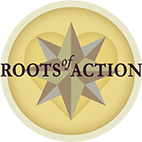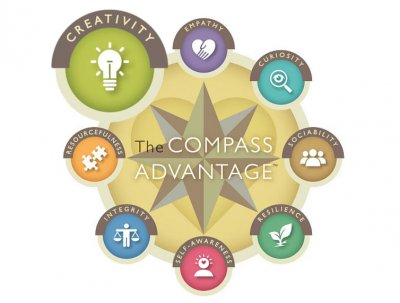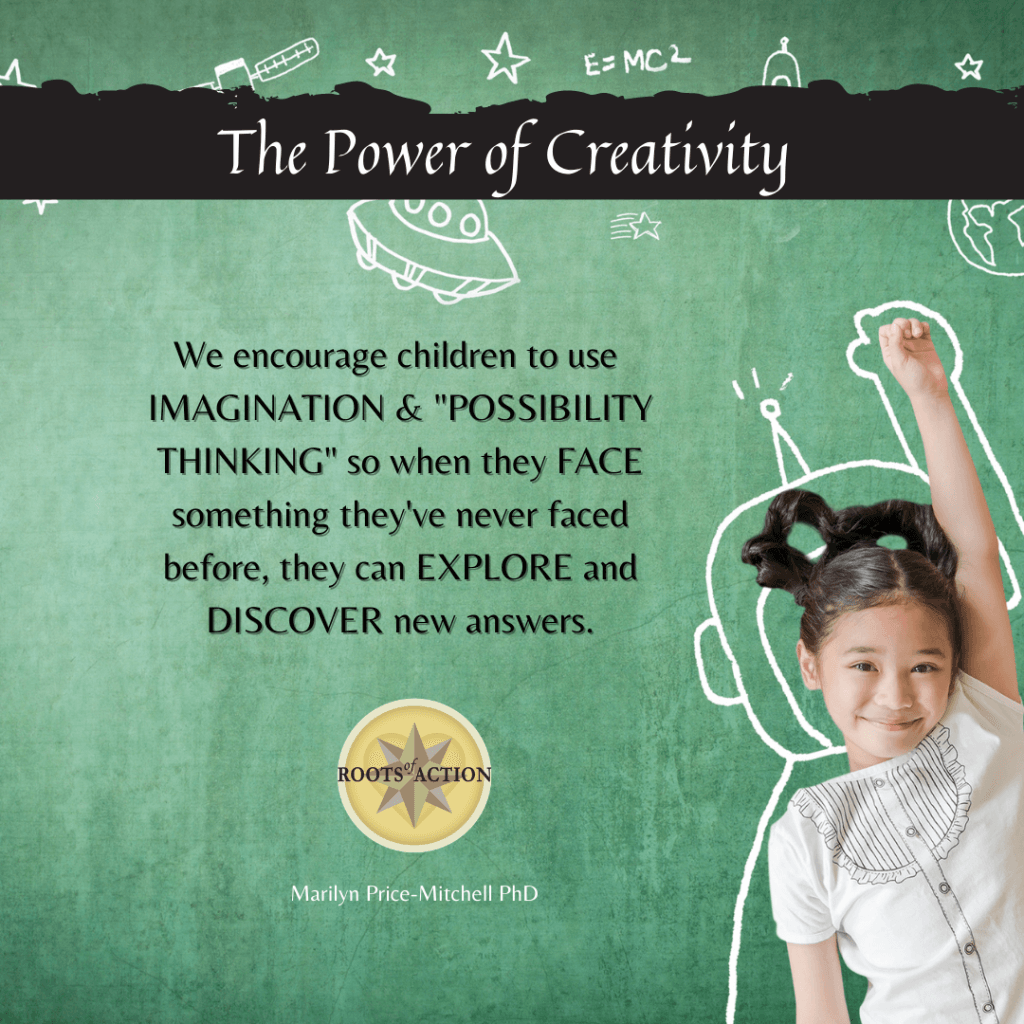
Creative thinking is the ability to consider something in a new way – to view ideas or information through different lenses.
Creative thinking involves generating new ideas, approaching problems from different angles, and thinking outside of conventional patterns. Creative ways of thinking can be applied in various fields such as art, science, business, and everyday problem-solving.
Research increasingly recognizes that creativity and creative thinking are valued outcomes of schooling, yet there is no universal framework for teaching it. The Australian Council for Educational Research (ACER) developed a framework that focuses on creative thinking rather than creativity because it believes creative thinking strengthens creative output, it can be taught, and it is easier to focus on creative thinking as a key element in a task.
Key components of creative thinking
Divergent Thinking
Generating many different ideas or solutions to a problem. This involves brainstorming, free-thinking, and exploring a wide range of possibilities.
Convergent Thinking
Narrowing down multiple ideas to find the best solution. This involves analyzing, evaluating, and refining ideas to determine the most effective approach.
Imagination
Using the mind to envision new possibilities and concepts. Imagination allows individuals to think beyond what is currently known or seen.
Flexibility
Being open to new ideas and willing to change one’s approach based on new information or perspectives. Flexibility allows for adaptation and innovation.
Originality
Creating unique and novel ideas that are not derived from existing concepts. Originality is a key marker of creativity.
Problem-Solving
Applying creative thinking to overcome challenges and find solutions. This involves seeing problems as opportunities for innovation.
Curiosity
A strong desire to learn, explore, and discover. Curiosity drives individuals to seek out new experiences and knowledge, which can fuel creative thinking.
Risk-Taking
Being willing to take chances and try new things, even if there is a possibility of failure. Risk-taking is essential for pushing boundaries and achieving breakthroughs.
Creative Thinking and Well-Being
Research links everyday creativity to positive psychological health and also supports the idea that creativity and creative thinking play a major role in flourishing.
Creativity and creative thinking are a part of The Compass Advantage™ framework because the ability to explore, discover, and express new ideas is an integral part of personal growth, happiness, well-being, and lifelong learning. Linked systemically by research to each of the other Compass abilities — especially curiosity, resilience, and resourcefulness — creativity is one of the foundations of student success.
Teaching Creativity and Creative Thinking
Teaching creative thinking in the classroom involves creating an environment that encourages curiosity, exploration, and the development of original ideas.
Here are some research-based strategies to foster creativity in students:
1. Encourage Open-Ended Questions and Projects
• Open-Ended Questions: Use questions that have multiple answers or solutions. For example, ask students how they might solve a community problem or improve a school policy.
• Project-Based Learning: Assign projects that require students to come up with their own ideas and solutions. This encourages them to think critically and creatively.
2. Integrate the Arts
• Arts Integration: Incorporate visual arts, music, drama, and dance into various subjects. This helps students see connections between disciplines and think in different ways.
• Creative Writing: Use creative writing exercises to allow students to express themselves and explore their imagination.
3. Create a Safe Environment for Risk-Taking
• Accept Mistakes: Encourage students to see mistakes as learning opportunities. Create a classroom culture where risk-taking is valued and students feel safe expressing unconventional ideas.
• Supportive Feedback: Provide constructive feedback that focuses on effort and creativity rather than just correctness.
4. Use Divergent Thinking Activities
• Brainstorming Sessions: Conduct regular brainstorming sessions where students can freely share ideas without immediate judgment.
• Mind Mapping: Use mind maps to help students visually organize their thoughts and explore connections between different concepts.
5. Incorporate Play and Games
• Play-Based Learning: Use games and playful activities to stimulate creativity. For example, role-playing games can help students think from different perspectives.
• Gamification: Integrate elements of game design into lessons to make learning more engaging and to encourage creative problem-solving.
6. Model Creative Thinking
• Think Aloud: Demonstrate your own creative thinking process by thinking aloud during problem-solving or brainstorming sessions.
• Share Examples: Share examples of creative solutions from various fields to inspire students.
7. Provide Opportunities for Collaboration
• Group Work: Encourage collaborative projects where students can share ideas and build on each other’s creativity.
• Peer Review: Use peer review sessions to allow students to give and receive feedback on creative projects.
8. Promote a Growth Mindset
• Growth Mindset Language: Use language that emphasizes effort and growth, such as praising perseverance and improvement rather than inherent talent.
• Challenges as Opportunities: Frame challenges as opportunities for growth and learning.
9. Integrate Technology
• Digital Tools: Use digital tools and resources that encourage creativity, such as coding programs, digital storytelling apps, and design software.
• Online Collaboration: Facilitate online collaboration platforms where students can work together on creative projects.
10. Connect to Real-World Problems
• Service Learning: Engage students in projects that address real-world problems. This not only enhances creativity but also teaches empathy and social responsibility.
• Guest Speakers: Invite guest speakers from various creative professions to share their experiences and insights.
By understanding and implementing these strategies, teachers can foster creativity in classroom environments, helping students develop the thought processes and attitudes necessary for creative thinking and problem-solving.
Student Success Series for Educators
Read the nine articles in the Student Success Series:
Student Success Develops from Inside Out – (Series Introduction)
Curiosity is a Core Predictor of Academic Performance
Social Emotional Development in the Classroom
Building Resilience in Your K-12 Classroom
Metacognitive Strategies for Student Success
Academic Integrity is Essential to Learning
Teach Students to Achieve Goals
Creative Thinking Sparks Student Engagement & Discovery
What Is Empathy? How To Cultivate It In the Classroom
Free Resources for Teachers
The Compass Youth Survey for Students ages 10-17: An online survey that can help students identify, understand, and strengthen their core abilities and impact their success as a student.
Our Community Promise: a frame-ready document that many teachers have hung in their classrooms to remind them and their students of the kind of values and habits of thinking that nurture student success.
I Have a Dream: a frame-ready document created by teens that define genuine success—to engage your students.
Reframing Success: Helping Children & Teens Grow from the Inside Out: an eBook that introduces The Compass Advantage. This eBook has been widely used by schools as a “Book Club” reading to engage parents about raising healthy children and teens.
Related Articles on Creative Thinking
Creativity: How Parents Nurture the Evolution of Children’s Ideas
Published: June 4, 2024





